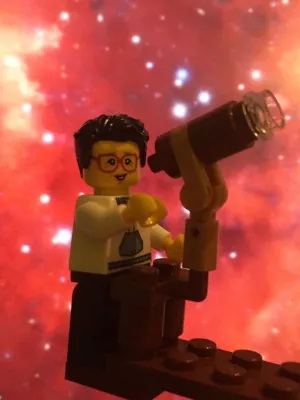
Henrik Hartman
Researcher (Leave of Absence)

The Ferrum project: experimental and theoretical transition rates of forbidden [Sc II] lines and radiative lifetimes of metastable Sc II levels
Author
Summary, in English
Context. In many plasmas, long-lived metastable atomic levels are depopulated by collisions (quenched) before they decay radiatively. In low-density regions, however, the low collision rate may allow depopulation by electric dipole (E1) forbidden radiative transitions, so-called forbidden lines (mainly M1 and E2 transitions). If the atomic transition data are known, these lines are indicators of physical plasma conditions and used for abundance determination. Aims. Transition rates can be derived by combining relative intensities between the decay channels, so-called branching fractions (BFs), and the radiative lifetime of the common upper level. We use this approach for forbidden [Sc II] lines, along with new calculations. Methods. Neither BFs for forbidden lines, nor lifetimes of metastable levels, are easily measured in a laboratory. Therefore, astrophysical BFs measured in Space Telescope Imaging Spectrograph (STIS) spectra of the strontium filament of Eta Carinae are combined with lifetime measurements using a laser probing technique on a stored ion-beam (CRYRING facility, MSL, Stockholm). These quantities are used to derive the absolute transition rates (A-values). New theoretical transition rates and lifetimes are calulated using the CIV3 code. Results. We report experimental lifetimes of the Sc II levels 3d(2) a(3)P(0,1,2) with lifetimes 1.28, 1.42, and 1.24 s, respectively, and transition rates for lines from these levels down to 3d4s a(3)D in the region 8270-8390 angstrom. These are the most important forbidden [Sc II] transitions. New calculations for lines and metastable lifetimes are also presented, and are in good agreement with the experimental data.
Department/s
- Lund Observatory - Has been reorganised
- Atomic Physics
Publishing year
2008
Language
English
Pages
575-580
Publication/Series
Astronomy & Astrophysics
Volume
480
Issue
2
Full text
- Available as PDF - 143 kB
- Download statistics
Document type
Journal article
Publisher
EDP Sciences
Topic
- Astronomy, Astrophysics and Cosmology
- Atom and Molecular Physics and Optics
Status
Published
ISBN/ISSN/Other
- ISSN: 0004-6361

